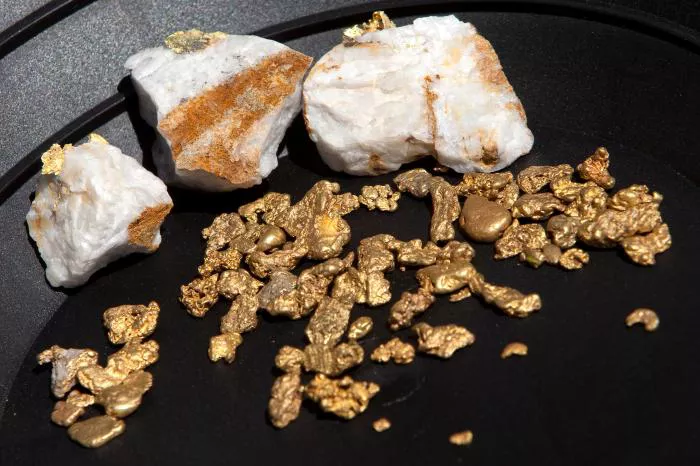Raw gold, often referred to as gold bullion or unrefined gold, holds a significant place in the world of investment and commerce. Understanding its worth requires knowledge of various factors that influence gold prices. This article will explore how much raw gold is worth, what affects its value, and how it is traded in the market.
What is Raw Gold?
Raw gold is gold that has not yet been refined into a usable form. It typically appears in the form of nuggets, dust, or unrefined bars. Unlike jewelry or manufactured items, raw gold has a direct relationship with the market price of gold, which fluctuates based on several economic factors.
The Current Market Price of Gold
The value of raw gold is primarily determined by the current market price of gold, often expressed in troy ounces. As of recent data, the price of gold has been fluctuating, commonly ranging from $1,800 to over $2,000 per troy ounce. However, this price can change daily based on market conditions.
Investors should regularly check reliable financial news sources or commodity trading platforms for the most current prices. This can help in making informed decisions about buying or selling raw gold.
Factors Influencing the Value of Raw Gold
Several factors impact the value of raw gold. These include supply and demand dynamics, geopolitical events, economic indicators, and currency fluctuations.
Supply and Demand
The balance between supply and demand is one of the primary drivers of gold prices. When demand for gold rises, prices tend to increase. Conversely, if there is an oversupply, prices may drop.
The demand for gold comes from various sectors, including jewelry manufacturing, electronics, and investment. Central banks also play a role by buying and holding gold as part of their reserves.
Geopolitical Events
Geopolitical stability or instability can greatly influence gold prices. During times of uncertainty, such as wars or political unrest, investors often flock to gold as a safe-haven asset. This increased demand can push prices higher.
For instance, recent conflicts or tensions in regions such as the Middle East can lead to spikes in gold prices as investors seek safety.
Economic Indicators
Economic indicators such as inflation rates, interest rates, and employment figures also affect gold prices. When inflation rises, gold typically becomes more valuable as it is seen as a hedge against currency devaluation.
Additionally, lower interest rates make gold more attractive. This is because gold does not yield interest or dividends, so when interest rates are low, the opportunity cost of holding gold decreases.
Currency Fluctuations
Gold is often priced in U.S. dollars. Therefore, fluctuations in the value of the dollar can impact gold prices. If the dollar weakens, gold prices usually rise, and vice versa. Investors should monitor currency trends to understand their potential impact on gold prices.
How is Raw Gold Purchased and Sold?
Investors can buy and sell raw gold through various channels. Here are some common methods:
Local Dealers
Local dealers often buy and sell raw gold in various forms. This includes gold nuggets, dust, and bars. Prices can vary from dealer to dealer, so it is advisable to shop around and compare rates.
Online Marketplaces
Several online platforms allow individuals to buy and sell raw gold. These platforms often provide competitive pricing and a wider selection of gold products. However, investors should ensure they are using reputable websites to avoid scams.
Auctions
Gold can also be purchased at auctions. Auction houses may sell raw gold alongside other valuable items. Bidding can sometimes result in lower prices, but it also carries the risk of paying more than market value.
Gold Exchanges
Gold exchanges are specialized markets where large quantities of gold are traded. While this option is more suited for institutional investors, individual investors can sometimes participate through trading platforms.
Determining the Value of Raw Gold
The value of raw gold is not solely based on its weight. Several other factors come into play:
Purity
Gold purity is measured in karats. Pure gold is 24 karats, while most jewelry is 14 or 18 karats. The higher the karat, the more valuable the gold. When assessing the worth of raw gold, its purity must be considered.
Weight
The weight of the gold is also crucial. Gold is typically measured in troy ounces, with one troy ounce equaling approximately 31.1 grams. The market price is often quoted per troy ounce, so knowing the weight of the gold is essential for valuation.
Form
The form of the gold can affect its value. Raw nuggets or unrefined bars may carry a different premium compared to more processed forms of gold. Investors should research how different forms are valued in the market.
Selling Raw Gold
When it comes time to sell raw gold, there are several factors to consider:
Market Timing
Timing is essential when selling gold. Prices fluctuate, so monitoring the market can help you sell at an optimal time. Selling during periods of high demand or uncertainty can yield better prices.
Documentation
If you have certificates or documentation proving the purity and weight of the gold, this can help enhance its value. Buyers are often more willing to pay a premium for gold with verified quality.
Finding Buyers
Identifying potential buyers is crucial. Local jewelers, online marketplaces, and auctions can be effective channels. It is wise to get multiple offers to ensure you receive a fair price.
See also: What Is The Value of a 1906 Half Sovereign
Conclusion
The worth of raw gold is influenced by a complex interplay of factors including market prices, supply and demand, geopolitical events, economic indicators, and currency fluctuations. Understanding these elements is key for anyone looking to invest in or sell raw gold.
Investors should regularly monitor the gold market, remain informed about economic and political developments, and explore various channels for buying and selling raw gold. By doing so, they can make informed decisions that maximize their investments in this precious metal.
Related topics:

